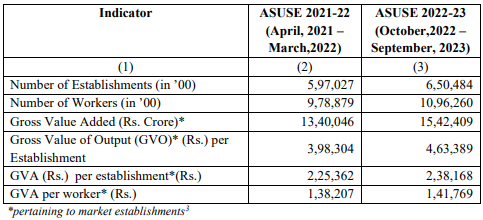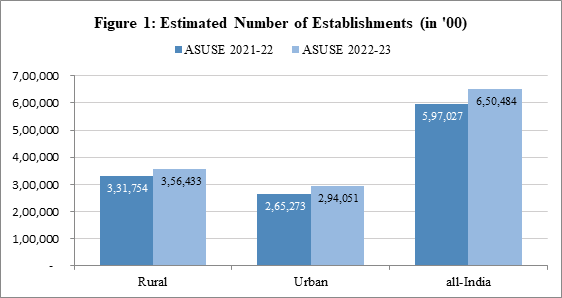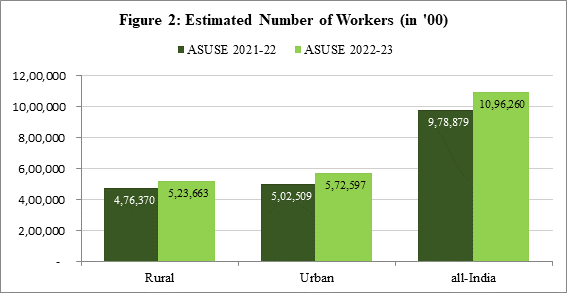The key results of the Annual Survey of Unincorporated Sector Enterprises (ASUSE) for the reference periods 2021-22 and 2022-23 were released.
An incorporated entity, like a limited liability partnership, joint venture, or a wholly owned subsidiary is considered a separate legal entity and has a more structured setup unlike unincorporated enterprises.



Gross Value Added (GVA) per worker is a measure of labour productivity of the sector.
What are the challenges associated with the published results?
|
Particulars |
NSS 67th round (2010-11) |
NSS 73rd Round (2015-16) |
ASUSE (2021-22) |
ASUSE (2022-23) |
|
Number of establishments (million) |
57.7 |
63.4 |
59.7 |
65.4 |
|
Number of workers (million) |
108 |
111.3 |
97.9 |
109.6 |
|
% of hired workers establishments |
15.4 |
15.8 |
14 |
15 |